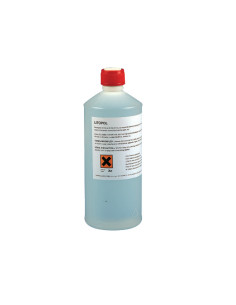Sterilization of Laboratory Equipment: Complete Guide and Essential Methods
The sterilization of laboratory materials is a critical process in any scientific environment. It ensures the reliability of results, protects the health of personnel, and preserves the integrity of experiments—especially in fields like microbiology, molecular biology, pharmacology, and clinical medicine.
Sterilization involves the complete elimination of microorganisms, including bacteria, fungi, viruses, and spores, which can contaminate materials or alter experimental procedures. This guide details the main sterilization methods, their specific applications, and best practices to ensure a safe and dependable work environment.
Why Is Sterilization Essential in the Laboratory?
The presence of microorganisms on laboratory materials represents a critical risk that can completely compromise the validity of any experiment or procedure. These microorganisms—bacteria, fungi, viruses, or spores—can infiltrate samples, culture media, solutions, or instruments and significantly alter expected outcomes. Microbiological contamination, even at imperceptible levels, can distort data, trigger unexpected reactions, contaminate pure cultures, or interfere with sensitive biochemical processes.
In the field of microbiology, for instance, where bacterial or fungal cultures are routinely grown in selective media, the accidental introduction of a foreign species can invalidate days or even weeks of work, lead to false conclusions, or result in irreproducible observations. In other words, a small mistake in sterilization can result in the complete loss of a research effort or, even worse, in the publication of incorrect findings.
In the context of medicine and clinical biotechnology, the consequences of working with contaminated materials can be even more severe. Cross-contamination of medical instruments or diagnostic reagents may lead to false positives or false negatives, therapeutic errors, and complications for the patient. In invasive procedures—such as surgeries or cell culture handling—using non-sterile materials can introduce pathogenic microorganisms into the human body, causing hospital-acquired infections or serious illnesses.
In this context, proper decontamination is not optional—it is a fundamental requirement to ensure the quality, reliability, and safety of laboratory work. Effective sterilization eliminates all forms of microbial life, allowing researchers to operate under controlled and reproducible conditions. Traceability and reproducibility—two pillars of the scientific method—depend directly on having all tools and materials free from contamination.
Beyond its impact on data integrity, sterilization plays a critical role in laboratory safety. Using contaminated materials can result in the accidental exposure of personnel to potentially dangerous microorganisms, increasing the risk of infections, allergies, or adverse reactions. For this reason, biosafety protocols include strict procedures for sterilization, disinfection, and the handling of biological waste, in order to prevent the spread of pathogens both within and outside the lab environment.
In summary, sterilization is an essential component of any modern laboratory. Its proper implementation not only guarantees the scientific integrity of results but also protects the health of those working in the experimental environment and the end users of the products developed. Rigorous decontamination measures are, therefore, a fundamental requirement for all responsible scientific practice.
Methods of Sterilizing Laboratory Equipment: Types and Applications
There are various sterilization methods, each with specific advantages, limitations, and uses depending on the material type—glass, plastic, metal, or solutions.
1. Heat Sterilization
a) Autoclave (Moist Heat)
- Principle: steam under high pressure (121ºC, 15 psi for 15–30 minutes).
- Advantages: very effective, penetrates porous materials, inactivates spores.
- Disadvantages: not suitable for heat- or moisture-sensitive materials.
- Applications: glassware, culture media, lab clothing, biological waste.
b) Dry Heat (Pasteur Oven)
- Principle: hot air (160–180ºC for approx. 2 hours).
- Advantages: suitable for metal tools or non-moisture-tolerant materials.
- Disadvantages: long cycles, not suitable for plastics.
- Applications: tubes, plates, forceps, glass labware.
2. Filtration Sterilization
- Principle: physical separation using membrane filters (0.22 µm pores).
- Advantages: does not alter solution composition.
- Disadvantages: only for liquids or gases; does not remove bacterial toxins.
- Applications: heat-sensitive solutions such as sera, antibiotics, or vitamins.
3. Chemical Sterilization (or Gas Sterilization)
- Principle: use of chemical agents like ethylene oxide, formaldehyde, or hydrogen peroxide.
- Advantages: effective for delicate and heat-sensitive materials.
- Disadvantages: requires post-ventilation, leaves toxic residues.
- Applications: plastics, catheters, syringes, optical instruments.
4. Radiation Sterilization
- Principle: use of ionizing (gamma, X-ray) or non-ionizing (UV) radiation.
- Advantages: effective at room temperature.
- Disadvantages: expensive equipment, requires precise control.
- Applications: heat-sensitive materials, packaging, pharmaceutical products.
Sterilization Process: Preparation Steps and Best Practices
Before sterilization, proper preparation of materials is essential:
- Pre-cleaning: remove visible residues using neutral detergent.
- Compatibility Check: confirm the method suits the material (especially for plastics and heat-sensitive components).
- Packaging: wrap appropriately using kraft paper, autoclave bags, or special wraps.
- Labeling: mark contents and date for traceability.
- Proper Loading: avoid overloading the autoclave or oven.
- Validated Cycles: follow standardized parameters (time, temperature, pressure).
Afterward, allow gradual cooling and avoid opening containers until it is safe to do so to maintain sterility.
Safety and Considerations When Handling Sterile Materials
Once sterilized, materials must be handled carefully to avoid recontamination:
- Always handle with clean gloves or sterilized forceps.
- Use clean areas or laminar flow hoods.
- Store in dry, clean conditions away from direct light.
- Avoid opening sterile packages before immediate use.
- Verify sterilization using chemical or biological indicators.
Frequently Asked Questions
What is the difference between sterilization and disinfection?
Disinfection removes most pathogenic microorganisms but not necessarily spores. Sterilization eliminates all forms of microbial life.
Can I autoclave plastic materials?
It depends on the type of plastic. Some, like polypropylene (PP), are autoclavable; others may deform or release toxic substances.
How do I know if sterilization has been effective?
By using chemical indicators (color change) or biological indicators (spores that should not grow post-process).
Is it necessary to clean materials before sterilizing them?
Yes, pre-cleaning removes residues that can protect microorganisms and reduce the effectiveness of the sterilization process.








